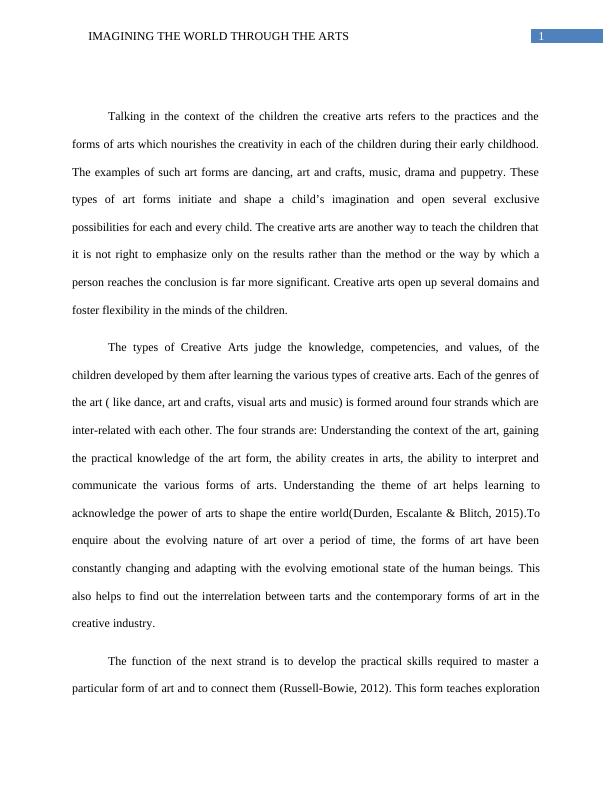Imagining the World through the Arts
7 Pages1772 Words118 Views
Added on 2023-06-13
About This Document
The creative arts in early childhood education help in the physical and mental development of children. It enhances emotional stability, reduces stress, and develops motor skills. The four strands of creative arts are understanding the context, gaining practical knowledge, creating in arts, and interpreting and communicating. The direction of activity is a suitable pedagogical principle for intellectual and aesthetic development.
Imagining the World through the Arts
Added on 2023-06-13
ShareRelated Documents
End of preview
Want to access all the pages? Upload your documents or become a member.
Strands of Creativity in Children - Visual Arts, Music, Drama, Dance
|16
|4398
|336
Importance of Creative Arts in Early Childhood Education
|8
|2202
|207
Value of Creative Arts in Early Childhood and Primary Education
|9
|2454
|55
Expressive Art - Development of Children
|4
|877
|20
Creative and Media Arts Pedagogies in Early Childhood Education
|8
|2604
|400
The Importance of Arts in Development of the Child
|4
|626
|288



